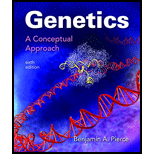
To determine:
The degree of similarities in the genomes of humans and chimpanzees.
Introduction:
The theory that humans and African great apes share common ancestors was proposed by Charles Darwin over 140 years ago. Now, there are significant and enough genetic evidence that prove that chimpanzees are the closest relative to humans.
Explanation of Solution
The fossil studies give evidence that the genetic divergence of chimpanzee and humans occurred around only 5 to 7 million years ago. The differences in
Despite large phenotypic differences, the genome sequencing of chimpanzee and human DNA show remarkable similarities. About 96% of human and chimpanzee DNA is similar with variations in just 1% of DNA along with 3% in deletions and insertions.
To determine:
The genetic changes responsible for the large differences in the anatomy, physiology, and behavior of humans and chimpanzees.
Introduction:
Despite the presence of 96% similarities in the DNA sequence of humans and chimpanzees, there is a great degree of phenotypic differences in both species.
Explanation of Solution
The difference in the genomes of human and chimpanzee is just 1%. There are various phenotypic differences in humans and chimpanzees like in the structure of bones, backbone, pelvis, jaw, teeth, skull, feet and hands. The size of the brain in humans is also more than twice of chimpanzees, and humans show characteristics of complex language and culture which are not exhibited in chimpanzees.
The explanation that how the even very small amount of genetic change (1%) have accounted for that much phenotypic differences between humans and chimpanzees is explained by regulatory sequences of the genome that regulate expression of genes. These small changes may affect the expression of different types of genes and simultaneously influence phenotypic traits.
Some scientists have identified such 90 transcription factors whose gene expression is significantly different between chimpanzees and humans. Alteration in a small number of regulatory sequences influenced the expression of various genes that produced large phenotypic differences in humans and chimpanzees.
There is 96% similarity between the genomes of humans and chimpanzees. Despite this much of genetic similarity, the difference in the regulatory sequence of the genome, there is the very large phenotypic difference between two species.
Want to see more full solutions like this?
Chapter 17 Solutions
Genetics: A Conceptual Approach
 Human Anatomy & Physiology (11th Edition)BiologyISBN:9780134580999Author:Elaine N. Marieb, Katja N. HoehnPublisher:PEARSON
Human Anatomy & Physiology (11th Edition)BiologyISBN:9780134580999Author:Elaine N. Marieb, Katja N. HoehnPublisher:PEARSON Biology 2eBiologyISBN:9781947172517Author:Matthew Douglas, Jung Choi, Mary Ann ClarkPublisher:OpenStax
Biology 2eBiologyISBN:9781947172517Author:Matthew Douglas, Jung Choi, Mary Ann ClarkPublisher:OpenStax Anatomy & PhysiologyBiologyISBN:9781259398629Author:McKinley, Michael P., O'loughlin, Valerie Dean, Bidle, Theresa StouterPublisher:Mcgraw Hill Education,
Anatomy & PhysiologyBiologyISBN:9781259398629Author:McKinley, Michael P., O'loughlin, Valerie Dean, Bidle, Theresa StouterPublisher:Mcgraw Hill Education, Molecular Biology of the Cell (Sixth Edition)BiologyISBN:9780815344322Author:Bruce Alberts, Alexander D. Johnson, Julian Lewis, David Morgan, Martin Raff, Keith Roberts, Peter WalterPublisher:W. W. Norton & Company
Molecular Biology of the Cell (Sixth Edition)BiologyISBN:9780815344322Author:Bruce Alberts, Alexander D. Johnson, Julian Lewis, David Morgan, Martin Raff, Keith Roberts, Peter WalterPublisher:W. W. Norton & Company Laboratory Manual For Human Anatomy & PhysiologyBiologyISBN:9781260159363Author:Martin, Terry R., Prentice-craver, CynthiaPublisher:McGraw-Hill Publishing Co.
Laboratory Manual For Human Anatomy & PhysiologyBiologyISBN:9781260159363Author:Martin, Terry R., Prentice-craver, CynthiaPublisher:McGraw-Hill Publishing Co. Inquiry Into Life (16th Edition)BiologyISBN:9781260231700Author:Sylvia S. Mader, Michael WindelspechtPublisher:McGraw Hill Education
Inquiry Into Life (16th Edition)BiologyISBN:9781260231700Author:Sylvia S. Mader, Michael WindelspechtPublisher:McGraw Hill Education





